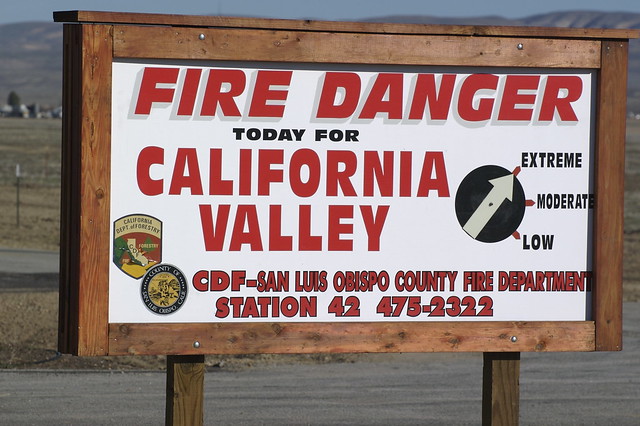Wildfires and deliverability
A few weeks ago we took a drive down I5 to attend a service at Bakersfield National Cemetery. Amid the acres and acres of almond farms there were patches of black from recent grassfires. Typical but boring California landscape. Wildfires are a hugely destructive but continual threat in California. Growing up on the east coast, I never really understood wildfires. How can acres and acres and square miles just burn?
Having lived in California for almost as long as I lived on the east coast, I understand a bit better. In some ways, I have to. Even living right on the bay, there’s still some risk of fire. Like the grass fire a few miles from here across the street from the FB headquarters a few years ago. Further up the hills, there’s an even bigger risk of fire. Every driver can see the signs and precautions. Fields have plowed firebreaks around the edges. CAL FIRE posts signs alerting the public to the current fire risk status.
What do wildfires have to do with deliverability?
I associate wildfires and deliverability together because of a radio show I did a few years ago. It was pitched as a “showdown” between marketers and deliverability. I was the representative of deliverability. During the conversation, one of the marketers mentioned that deliverability people were too focused on the worst case scenario. That we spoke like we expected a fire to break out at any moment. His point was that deliverability spent too much time focused on what could happen and not enough time actually just letting marketers send mail.
His overall point was deliverability people should put out the fires, rather than trying to prevent them in the first place.
I thought about that conversation during the long drive down I5 the other day. I saw the firebreaks plowed into fields at the side of the road. And I saw the patches of blackness from fires reach along the highway where there were no firebreaks.
There are a group of marketers who really hate the entire concept of deliverability. Their point of view is that deliverability is hampering their ability to make money. I’ve even heard some of them assert they don’t care if 70% of their mail goes to the bulk folder. They should be allowed to send blasts of mail and deliverability shouldn’t tell them what they can do. Deliverability, so the complaint goes, is simply out to hurt marketers.
The only good deliverability is that which gets them unblocked when their behavior triggers IP based blocks. When the field is burning down, they’d like us to come spray water on it. And then go away and let them keep throwing lit cigarettes out their car windows.
But that’s not all that firefighting is about. Much of the work is preventing fires in the first place. In the US, a lot of that work is done through building codes. There are mandates like smoke detectors, fuel free spaces around dwellings, and sprinklers for some buildings. Monitoring local conditions and enforcing burn bans are also a large part of what the fire service does.
I like the fire fighter motif a lot. Much of what deliverability does is actually about preventing the block. ESPs have building code like standards for what mail is good and what is bad and what can be sent on their networks. Many of us publicly speak and educate about good practices and preventing blocks in the first place.
Fire prevention is about risk management and understanding how little things add up. Deliverability is similar. All the little things senders do to improve their deliverability adds up to a lower risk of fire. Yes, things like listbombing happen where even the best deliverability advice wouldn’t have prevented it. But, overall, deliverability wants to help senders get their mail in front of the people who can act on it. Some of that advice, though, takes the form of risk management and saying no.
